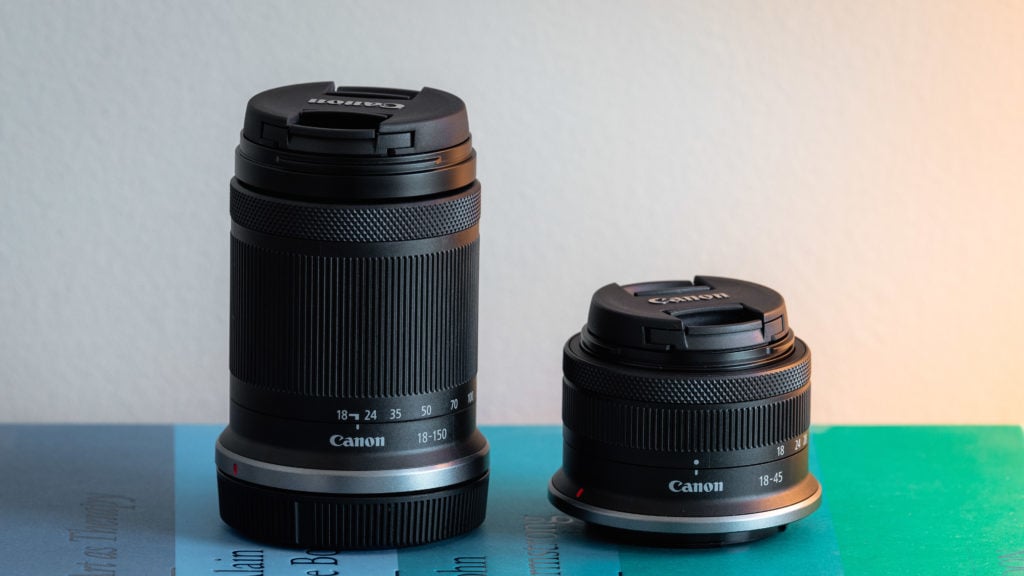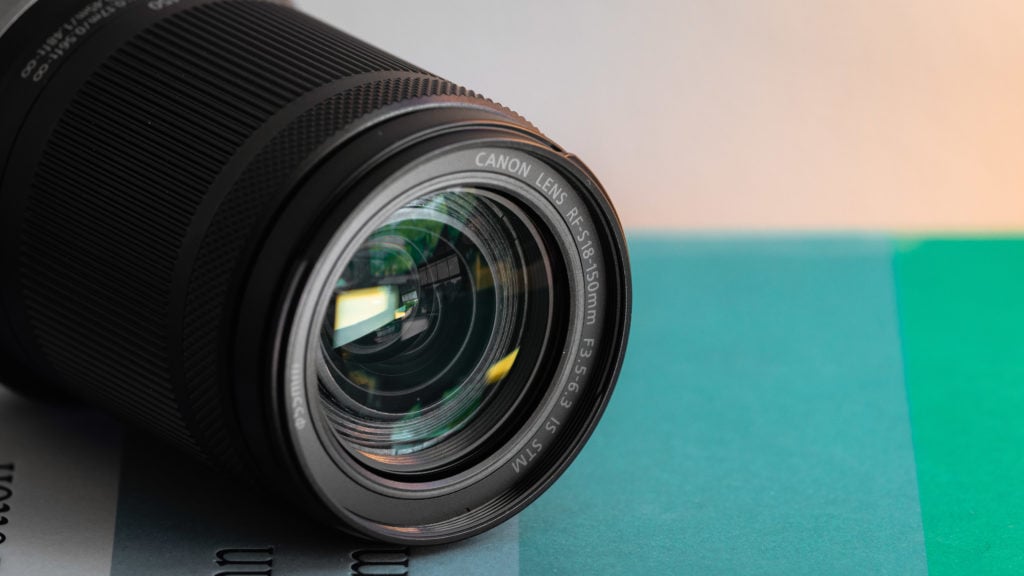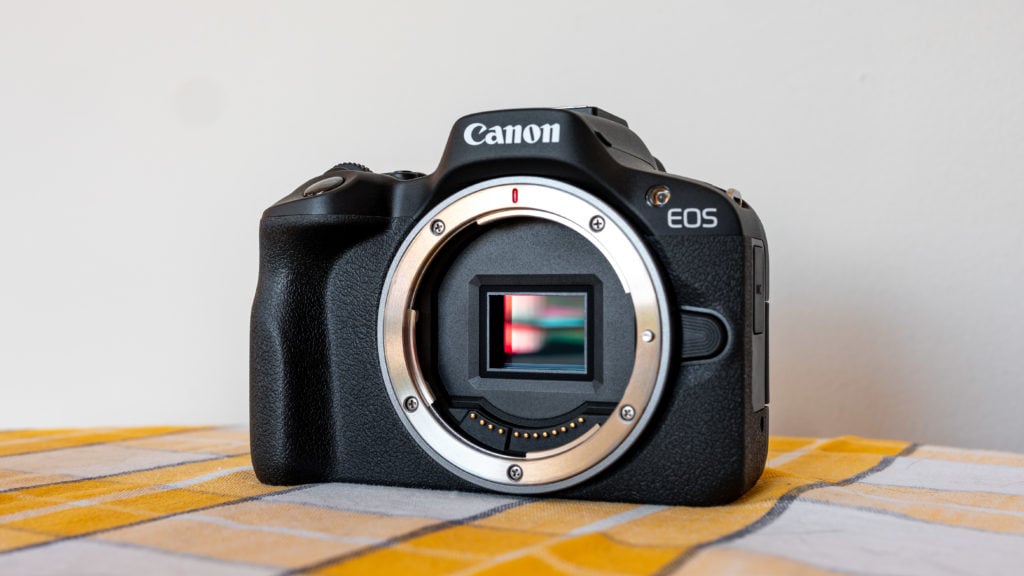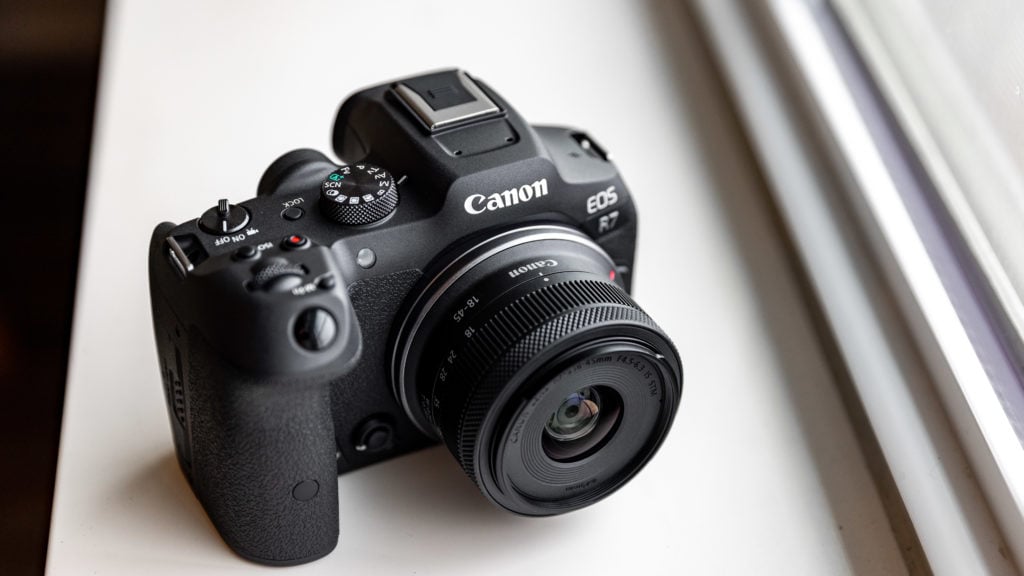When Canon introduced the Canon EOS R7 and R10 in 2022 they created the new RF-S lens system for their cropped mirrorless cameras that use the APS-C format. While Canon RF-S lenses are designed for APS-C cameras the lenses will work on all Canon cameras with the RF mount.
In this post you’ll go over everything about Canon RF-S lenses.
What is a Canon RF-S lens?

While the mount on all cropped Canon mirrorless cameras is considered to be the RF mount the APS-C cropped sensor will not utilize all of an RF lens. This is why Canon created RF-S lenses, to build lenses specifically for RF cropped cameras. Canon RF-S lenses use the same RF mount the lenses are smaller and are designed to be used with a cropped sensor like on the Canon R7, R10, or R50.
Canon RF-S lenses can be used on full-frame Canon cameras but the camera will adjust the frame to only use a portion of the lens. This means that you can use RF lenses on cameras designed for RF-S lenses and RF-S lenses on full-frame cameras designed for RF lenses. There will just be a different in focal lengths when using a lens with a different sensor than it’s designed for.
What Canon RF-S lenses are there?

Canon has announced two lenses for the APS-C format EOS R7 and R10 cameras: the Canon RF-S 18-150mm F3.5-6.3 IS STM and the Canon RF-S 18-45mm F4.5-6.3 IS STM. These lenses have a 1.6x magnification factor, which means that the RF-S 18-150mm F3.5-6.3 IS STM is comparable to a 28.8-240mm lens on a full-frame camera, while the RF-S 18-45mm F4.5-6.3 IS STM is equivalent to a 28.8-72mm lens. The RF-S 18-150mm F3.5-6.3 IS STM is a good choice for travel photography, while the small and light RF-S 18-45mm F4.5-6.3 IS STM is a great option for everyday photography.
I’m still waiting for Canon to release more RF-S lenses which will likely be soon since they just released the Canon R50. For the latest RF-S lenses I recommend shopping the latest RF-S lenses here.
Can I use Canon RF lenses on a cropped Canon RF-S mirrorless camera?

Although Canon cameras designed for RF-S lenses like the R7 and R10 have a smaller sensor than Canon’s full-frame R-series cameras, RF lenses designed for the full-frame system will work on them. The lenses may appear 1.6 times longer than they do on a full-frame camera. This is due to the focal length magnification factor. As a result, a Canon RF 70-200mm f4L IS USM lens will essentially become a 112-320mm lens, which is ideal for capturing distant details. However, this also implies that some of the lens’s potential is “wasted” because you’re only utilizing a portion of the lens optics, and you’re carrying a larger, heavier lens than an equivalent RF-S lens would be.
Can I use RF-S lenses on a full-frame Canon R system cameras?
Canon RF-S lenses are made for the Canon R7, R10, and R50 cameras, but they also work with full-frame Canon RF cameras like the EOS R6, R5, R3, R, R8, and RP. When using a RF-S lens on a full-frame Canon RF camera you will notice a 1.6x crop. This is because RF-S lenses only cover a portion of the full-frame RF sensor. You’ll also want to make sure your camera’s firmware is up to date to ensure compatibility with the RF-S lenses.
Can I use the Canon EOS R7 or Canon EOS R10 with EF and EF-S lenses?
To make EF or EF-S lenses work with the new Canon R7 and R10 cameras, you will need to use an adaptor. The EF and EF-S to RF lens adapter makes most EF/EF-S lenses work on all RF mount cameras. I highly recommend buying the adapter if you’re coming from a Canon DSLR since it allows most of your lenses to work with Canon’s mirrorless system.
Are Canon RF-S lenses as big as RF lenses?
No, even though the lens mount has the same size, the barrel is smaller since the optics inside are not required to be as big. As a result, Canon RF-S lenses should be smaller compared to Canon RF optics of similar type.
Will there be more Canon RF-S lenses?

Canon has not shared any information about its future plans for the RF-S lens range. However, we can expect more lenses to be released in 2023. We’ll likely see many lenses releases for this mount since they work on all RF cameras and they’ve already released three cameras designed for the RF-S lens system. It’s also helpful to check out sites like Canon Rumors for the latest rumors of what lenses will be released.
I hope this breakdown of Canon RF-S lenses was helpful, if you have any questions about the Canon RF-S lineup let me know in the comment below.





Do you know if Canon force the crop when installing APSC lenses on full frame camera RF camera? Is there any way to avoid that in the menus? With Sony you can use APSC lenses with full frame mode and then crop afterwards in post for stabilization (video) or crop to edit photography.
To my knowledge there is no way to manually pick the sensor mode but I could be wrong.
The range of lenses is severely limited.If Canon can not produce better quality lenses,at least allow Sigma and Tamron to do so.
Even worse than discontinued M-range.
No one ever talks crop factor if RF-S lens is mounted on R7. if the image circle is designed to fit the crop sensor, it would seem that the R7 with RF-S should have no crop factor, since all of the lens image is used. true or false?
Technically yes Mike, I would guess there is no crop factor since you’re using the full lens. That being said the focal lengths are still relational to a 35mm sensor so it’s good to know that the focal length of the lens listed will be downscaled.